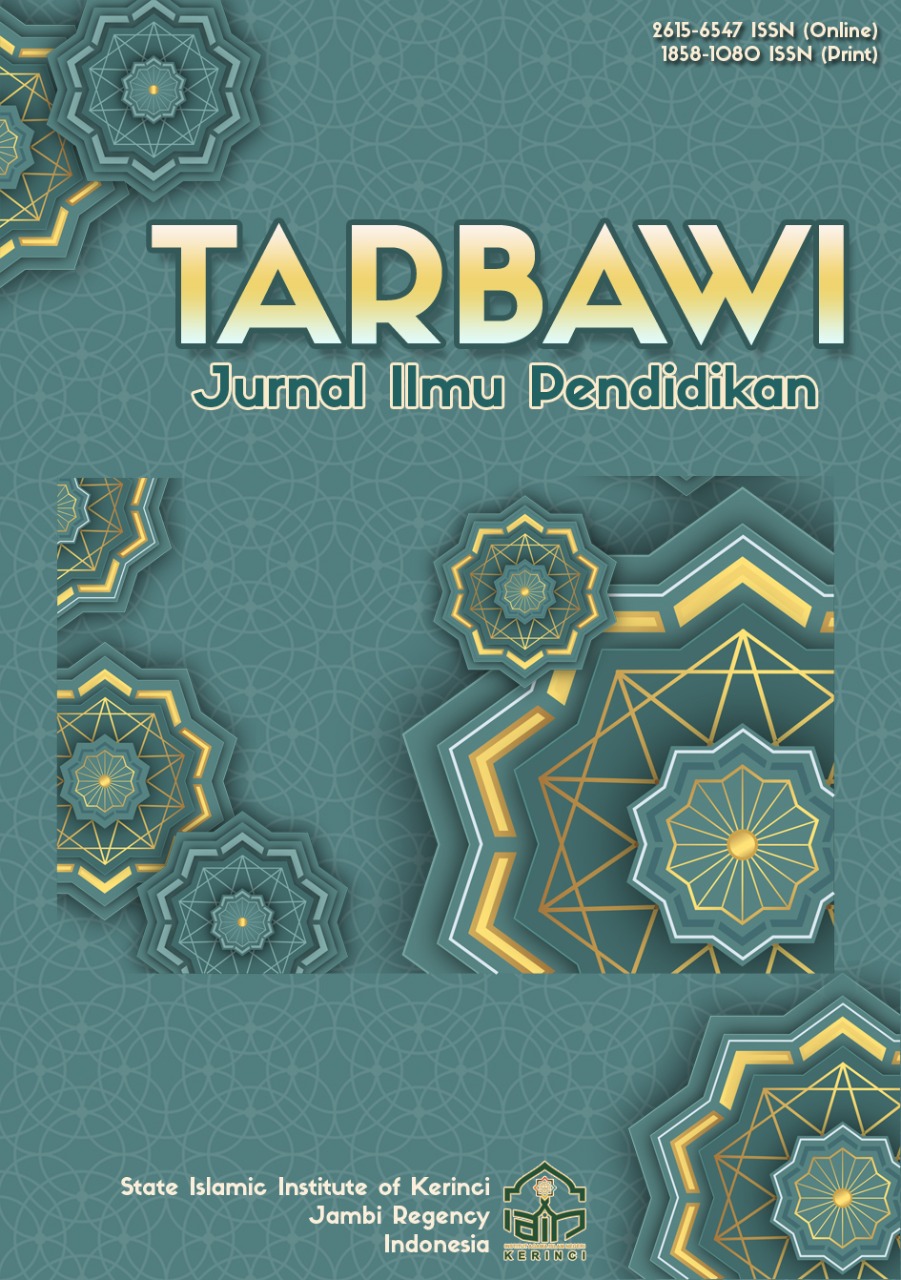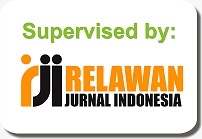Students’ Problem-solving Skills and Perceptions through Problem-based Learning Assisted by Google Classroom
DOI:
https://doi.org/10.32939/tarbawi.v21i1.5029Keywords:
Problem-solving Skills, Problem-based Learning, Google Classroom, Learning PerceptionAbstract
Problem-solving skills are crucial for students to have in learning Newton's laws. However, it has been found that students are still relatively unsatisfied with these skills, which are still relatively unsatisfactory, so learning innovations that support and train these problem-solving skills are needed. In addition to training, students' perceptions of learning must be considered. This study aims to enhance problem-solving skills through the PBL model, assisted by Google Classroom (PBL-GC), on Newton's law material, and to investigate student perceptions of learning using a mixed-methods approach. The mixed-methods design used is an explanatory sequential design. Quantitative data were collected with a one-group pretest and posttest design and then analyzed with descriptive and inferential statistics. Then, qualitative data were collected to see students' thoughts about problem-solving skills and their perceptions of PBL-GC. The instruments used were problem-solving tests and semi-structured interview guidelines. The results indicate that PBL-GC has proven to improve problem-solving skills with an effect size of 1.62 in the strong category, and students have positive perceptions of their learning. The implications of the findings of this study strengthen theory and previous research and support educators in using the PBL model with different tools.
Downloads
References
Amalia, A. S., Desnita, Festiyed, & Putra, A. (2024). Persepsi Siswa tentang Keterlaksanaan Model Problem-Based Learning dalam Pembelajaran Fisika SMA di Kota Padang. Jrunal Pendidikan Tambusai, 8.
Apriliasari, R. N., Jumadi, Wilujeng, I., & Kuswanto, H. (2019). The Effect of Web-Assisted Problem Based Learning Model Towards Physics Problem Solving Ability of Class X Students. Journal of Physics: Conference Series, 1233(1). https://doi.org/10.1088/1742-6596/1233/1/012059
Arends, R. (2012). Learning to Tech. Tenth Edition. In New York: McGraw-Hill Education.
Argaw, A. S., Haile, B. B., Ayalew, B. T., & Kuma, S. G. (2017). The effect of problem based learning (PBL) instruction on students’ motivation and problem solving skills of physics. Eurasia Journal of Mathematics, Science and Technology Education, 13(3), 857–871. https://doi.org/10.12973/eurasia.2017.00647a
Ayumniyya, L., & Setyarsih, W. (2021). Profil Kemampuan Berpikir Tingkat Tinggi Siswa SMA dalam Pemecahan Masalah pada Materi Hukum Newton. IPF: Inovasi Pendidikan Fisika, 10(1), 50–58.
Azizah, M. N. (2021). Development of Responsibility through Problem Based Learning Using Google Classroom on the Triangle Rules Materials. Ideguru: Jurnal Karya Ilmiah Guru, 6(1). https://doi.org/10.51169/ideguru.v6i1.182
Bakri, F., Kusuma, K. F., & Permana, A. H. (2021). TPACK implementation in physics textbook: Practice problem-solving skill in Newton’s law of motion for senior high school students. Journal of Physics: Conference Series, 2019(1). https://doi.org/10.1088/1742-6596/2019/1/012057
Budianti, A. (2021). Penerapan Pembelajaran Berbasis Masalah untuk Meningkatkan Kemampuan Berpikir Kritis dan Hasil Belajar IPA Siswa MTsN 1 Bantul. SECONDARY: Jurnal Inovasi Pendidikan Menengah, 1(1).
Cohen, L., Manion, L., & Morrison, K. (2007). Research Methods in Education, Sixth Edition. London: Routledge.
Cresswell, J. W. (2015). Educational Research - Planning, Conducting, And Evaluating Quantitative and Qualitative Research - Fifth Edition (5th ed.). In Pearson.
Creswell, J. W., & Creswell, J. D. (2023). Research Design Qualitative, Quantitative, and Mixed Methods Approaches Sixth Edition. In SAGE Publications.
Ghinatri, N., Sari, I. M., & Saepuzaman, D. (2024). Development of New Todame Learning Media to Improve Problem-Solving Skills on Newton’s Law for High School Students. Jurnal Pendidikan Fisika Dan Teknologi, 10(2), 320–329. https://doi.org/10.29303/jpft.v10i2.7190
Gumisirizah, N., Muwonge, C. M., & Nzabahimana, J. (2023). Effect of Problem-based LLearning on Students’ Problem-Solving Ability to Learn Physics. Physics Education.
Hake, R. R. (1998). Interactive-engagement versus traditional methods: A six-thousand-student survey of mechanics test data for introductory physics courses. American Journal of Physics, 66(1), 64–74. https://doi.org/10.1119/1.18809
Hermala, & Sapri, J. (2021). Penerapan Model Discovery Learning untuk Meningkatkan Kemampuan Memecahkan Masalah dan Prestasi Belajar. DIADIK: Jurnal Ilmiah Teknologi Pendidikan, 11(1), 2021.
Hermawan, S., Sinaga, P., & Hikmat. (2022). Strategi Representasi Eksternal dalam Meningkatkan Keterampilan Kognitif Materi Hukum Newton Gerak Lurus. Jurnal Pendidikan Nusantara, 1(2), 100–110. https://doi.org/10.55080/jpn.v1i2.16
Hijriani, & Hatibe, H. A. (2021). Analysis of Learning Difficulties in Physics Problem Solving on Newton’s Law of Motion. Jurnal Pendidikan Fisika Tadulako Online, 9(1), 45–49. http://jurnal.fkip.untad.ac.id/index.php/jpft
Hita, I. P. A. D., Dewi, K. A. K., & Pambayu, S. H. (2024). Efektivitas Model Pembelajaran Berbasis Masalah untuk Meningkatkan Kemampuan Gerak Passing Permainan Bola Basket. Jurnal Pendidikan Olahraga, 5.
Hudha, M. N., Aji, S., & Rismawati, A. (2017). Pengembangan Modul Pembelajaran Fisika Berbasis Problem Based Learning untuk Meningkatkan Kemampuan Pemecahan Masalah Fisika. SEJ (Science Education Journal), 1(1), 36–51. https://doi.org/10.21070/sej.v1i1.830
Jaeger, M., & Adair, D. (2014). The Influence of Students’ Interest, Ability and Personal Situation on Students’ Perception of A Problem-based Learning Environment. European Journal of Engineering Education, 39(1), 84–96. https://doi.org/10.1080/03043797.2013.833172
Januarifin, D., Parno, P., & Hidayat, A. (2018). Kesalahan Siswa SMA dalam Memecahkan Masalah pada Materi Hukum Newton. Momentum: Physics Education Journal, 2, 47. https://doi.org/10.21067/mpej.v1i1.2292
Karmila, N., Wilujeng, I., & Sulaiman, H. (2021). The Effectiveness of Problem Based Learning (PBL) Assisted Google Classroom to Scientific Literacy in Physics Learning. Proceedings of the 6th International Seminar on Science Education.
Khoirunnisa, J. P. N., & Dwikoranto, D. (2021). Profil Keterampilan Berpikir Kritis Siswa Dalam Penyelesaian Masalah Materi Hukum Newton. EDUKATIF : JURNAL ILMU PENDIDIKAN, 3(3), 806–816. https://doi.org/10.31004/edukatif.v3i3.429
Laila, S. I., & Anggaryani, M. (2021). The Use of STEM-Based Virtual Laboratory (PhET) of Newton’s Law to Improve Students’ Problem Solving Skills. Jurnal Pendidikan Fisika, 9(2), 125–133. https://doi.org/10.26618/jpf.v9i2.5078
Lestari, S. A., & Jatmiko, B. (2023). Literature Study on Learning Physics with Problem-based Learning (PBL) Models to Improve Students’ Problem-Solving Skills. Inovasi Pendidikan Fisika, 12(2), 37.
Nesi, Y. M. D., Kusairi, S., & Nafisah, A. W. L. (2022). Analysis of Student Perceptions of Problem-solving Learning and Peer Assessment. Momentum: Physics Education Journal, 73–85. https://doi.org/10.21067/mpej.v6i1.6005
Nicholus, G., Muwonge, C. M., & Joseph, N. (2023). The Role of Problem-Based Learning Approach in Teaching and Learning Physics: A Systematic Literature Review. F1000Research, 12, 951. https://doi.org/10.12688/f1000research.136339.1
Ningsih, S., Suana, W., Suana, W., Sesunan, F., & Sesunan, F. (2021). The Effect of Multi-Stage Discussion with Google Classroom and WhatsApp in Learning Physics on Problem Solving Ability. Berkala Ilmiah Pendidikan Fisika, 9(3), 316. https://doi.org/10.20527/bipf.v9i3.11169
Pasaribu, A., Wiyono, K., Murniati, Saparini, & Sury, K. (2020). Analysis of Student’s Higher-Order Thinking Skill in Newton’s law. 4th Sriwijaya University Learning and Education International Conference (SULE-IC 2020), 761–766.
Putri, H. N. P. A., Wadilkh, S. F., Kusairi, S., & Hidayat, A. (2021). The Impact of Simulation Based Formative Assessment on Student Problem Solving Skill in Learning Newton Law. International Joint Conference on Science and Engineering 2021 (IJCSE 2021). https://forms.gle/ez29znMPhFUqyFSk9
Ramadhani, R., Umam, R., Abdurrahman, A., & Syazali, M. (2019). The Effect of Flipped-Problem Based Learning Model Integrated with LMS-Google Classroom for Senior High School Students. Journal for the Education of Gifted Young Scientists, 7(2), 137–158. https://doi.org/10.17478/jegys.548350
Retno, N. H. D., Sunarno, W., & Marzuki, A. (2019). Influence of Physics Problem-solving Ability through the Project Based Learning towards Vocational High School Students’ Learning outcomes. Journal of Physics: Conference Series, 1307(1). https://doi.org/10.1088/1742-6596/1307/1/012009
Sari, A. (2023). Pembelajaran Multi Representasi untuk Meningkatkan Kemampuan Pemecahan Masalah Siswa SMA pada Materi Hukum II Newton. Jurnal Mahasiswa TARBAWI: Journal on Islamic Education, 7(1), 134–147. http://studentjournal.umpo.ac.id/index.php/tarbawi
Schreiber, J., & Asner-Self, K. (2011). Educational Research: Interrelationship Of Questions, Sampling, Design, and Analysis. In USA: John Wiley & Sons, Inc.
Selçuk, G. S., Çalışkan, S., & Erol, M. (2008). The Effects of Problem Solving Instruction on Physics Achievement, Problem Solving Performance and Strategy Use. Latin-American Journal of Physics Education, 2(1). http://www.journal.lapen.org.mx
Setioningsih. (2021). Penerapan Model Pembelajaran Problem Based Learning (PBL) sebagai Upaya Meningkatkan Hasil Belajar Fisika Siswa pada Materi Hukum Newton. SECONDARY : Jurnal Inovasi Pendidikan Menengah, 1(2), 27–34.
Siregar, R., Dewi, W. S., Putra, A., & Hidayati, H. (2023). Effect of Problem-Based Learning Model on Students’ Physics Problem Solving Ability: A Meta-Analysis. Jurnal Penelitian Pendidikan IPA, 9(4), 2103–2109. https://doi.org/10.29303/jppipa.v9i4.3291
Suindhia, I. W. (2022). Penerapan Model Pembelajaran Problem Based Learning dengan Menggunakan Media Google Meet dan Google Classroom untuk Meningkatkan Hasil Belajar Fisika. STRATEGY: Jurnal Inovasi Strategi Dan Model Pembelajaran, 2(4).
Sulaiman, F. (2010). Students’ Perceptions of Implementing Problem-based Learning in A Physics Course. Procedia - Social and Behavioral Sciences, 7, 355–362. https://doi.org/10.1016/j.sbspro.2010.10.048
Supeno, S., Subiki, S., & Rohma, L. W. (2018). Students’ Ability In Solving Physics Problems on Newtons’ Law of Motion. Jurnal Ilmiah Pendidikan Fisika Al-Biruni, 7(1), 59–70. https://doi.org/10.24042/jipfalbiruni.v7i1.2247
Susiana, N., Yuliati, L., & Latifah, E. (2018). Pengaruh Interactive Demonstration terhadap Kemampuan Pemecahan Masalah Siswa Kelas X pada Materi Hukum Newton. Jurnal Pendidikan: Teori, Penelitian, Dan Pengembangan, 3(3), 312–315. https://doi.org/10.1103/PhysRevSTPER.7.020109
Usman, A. R., Khaeruddin, K., & Setiawan, T. (2024). Implementation of Problem-Based Learning Model to Improve High School Students’ Problem-Solving Ability on Physics Materials. Jurnal Pendidikan Fisika Dan Teknologi, 10(2), 250–256. https://doi.org/10.29303/jpft.v10i2.6902
Wahyuni, I. H., & Umam, K. (2020). Analysis of Collage Student Problem Solving Skills on Newton’s Law Material. Jurnal Ilmiah Pendidikan Fisika-COMPTON, 7(1).
Yanto, F., Festiyed, F., & Enjoni, E. (2021). Problem Based Learning Model For Increasing Problem Solving Skills In Physics Learning. JIPF (Jurnal Ilmu Pendidikan Fisika), 6(1), 53. https://doi.org/10.26737/jipf.v6i1.1870
Yunior Erlangga, S., Jumadi, Nadhiroh, N., & Wingsih, P. H. (2021). The Effect of Using Workbooks with Problem-Based Learning (PBL) Through Google Classrooms to Improve Critical Thinking Skills During the COVID-19 Pandemic. Proceedings of the 6th International Seminar on Science Education.
Downloads
Published
Issue
Section
License
Copyright (c) 2025 Nur Iva Wulansari, Febi Putri, Lia Yuliati, Nasikhudin Nasikhudin

This work is licensed under a Creative Commons Attribution-ShareAlike 4.0 International License.









